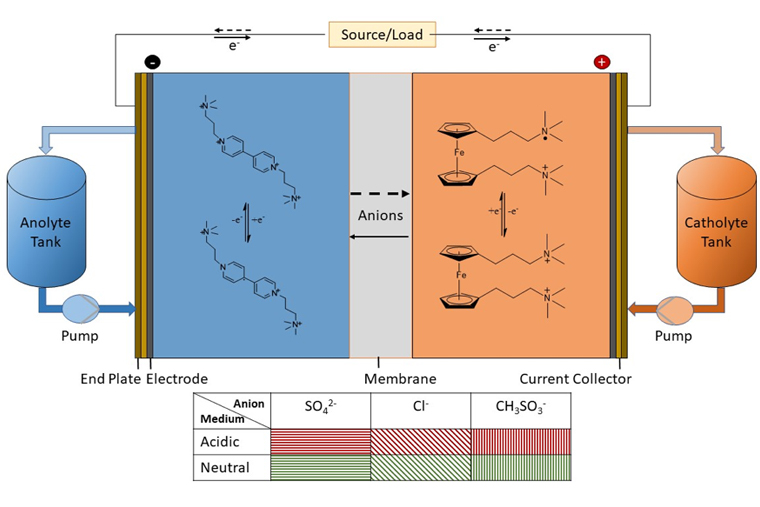A more efficient way to find a more efficient battery
A 'universal descriptor' will help determine the best chemicals to use, reducing time in the lab — and costs — necessary for the development of new batteries, new research in Vijay Ramani's lab shows

The pace of progress in the renewable energy sector is limited not only by the technology to capture energy from the sun, the wind, the oceans or the Earth’s radiant heat, but also by the ability to effectively store and deploy that energy after it has been harnessed.
The primary hurdle in the development of reliable batteries that can be scaled to serve the needs of the grid is, unsurprisingly, cost — of materials, but also of research necessary to find the best materials.
At Washington University in St. Louis, a research team in the lab of Vijay Ramani, the Roma B. & Raymond H. Wittcoff Distinguished University Professor at the McKelvey School of Engineering, has developed a way to determine which materials will be suitable as a key component in any organic redox flow battery (ORFB) for grid-scale energy storage: the electrolyte.
The research was published Aug. 20 in the journal Proceedings of the National Academy of Sciences of the USA (PNAS).
Organic redox flow batteries (ORFB) are low-cost. Their design makes them cheaper than lithium-ion batteries per unit of electricity stored at scale, and they use inexpensive organic materials for the battery actives (cathode and anode).
“In our system, we are using viologen, which is widely used as a herbicide and is very inexpensive,” said first author Kritika Sharma, a PhD student in Ramani’s lab. “If we are using such organic actives, then the main decision is, ‘What electrolyte do we dissolve it in to maximize battery efficacy?’” she said.
Traditionally, answering that question has involved a lot of trial-and-error experimentation and analyses. What Ramani’s team found, however, has the potential to eliminate much of this work: A universal descriptor that indicates which electrolytes are best paired with organic actives.
Ramani’s research team, consisting of Shrihari Sankarasubramanian and Javier Parrondo, in addition to Sharma, looked at two actives (a ferrocene dichloride cathode and a propyl viologen tetrachloride anode) and six electrolytes (sulfuric acid; hydrochloric acid; methane sulfonic acid; sodium sulfate; sodium chloride; and sodium methane sulfonate) at neutral and acidic pH. They found their universal descriptor indicated the combinations with the most complementary chemistry and battery performance characteristics — low discharge polarization and high open circuit voltage.

“Our descriptor i.e., solvent reorganizational energy, allowed us to show that low pH electrolytes with methane sulfonate or chloride counterions worked best,” said Sankarasubramanian, joint first author on the paper and assistant professor of chemical engineering at the University of Texas at San Antonio. “We were able to predict this with an hour of experimentation in the lab instead of the usual days or weeks.”
Although the paper shows results from a limited number of combinations, Sharma said the descriptor can be generalized as it is based on the fundamental relationship between the actives and electrolytes and correlates the kinetic and transport properties in the system.
With a generalizable method to predict the best electrolytes for a given organic active, the development of new storage technologies will become more efficient — and none too soon.
“Grid-scale energy storage is required to have a stable grid when intermittent solar- and wind-based generators are dominant,” Sharma said. “Our universal descriptor can help speed up the development of new storage solutions.”
This research was supported by the US Department of Energy, Award No. DE-AR0000768, as part of the Integration and Optimization of Novel Ion Conducting Solids program.
Click on the topics below for more stories in those areas
- Research
- Industry
- Global
- Energy, Environmental & Chemical Engineering
- The Institute of Materials Science & Engineering




